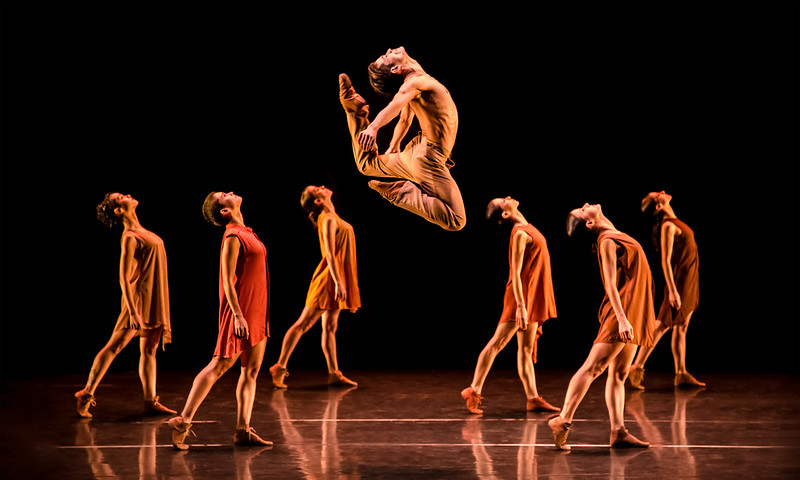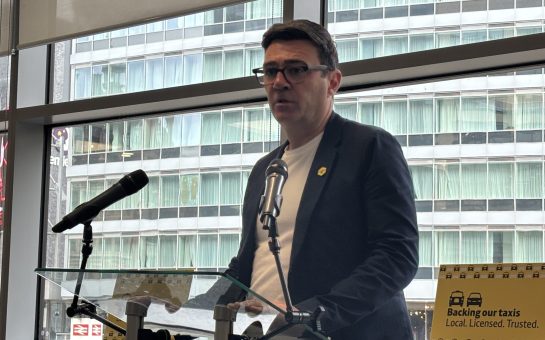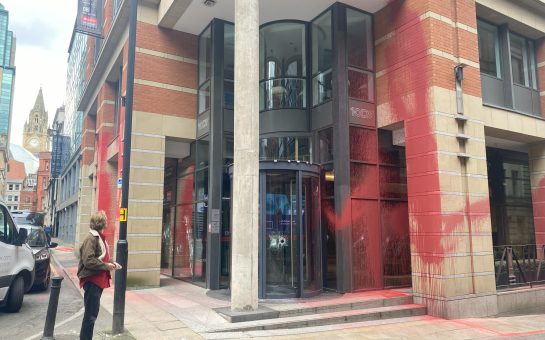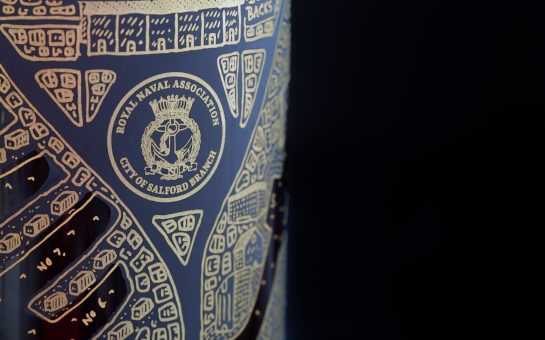With a triple bill of contemporary pieces inspired by Latin rhythms and brilliantly executed by a talented cast, Brazil’s premier dance institution, São Paulo Dance Company, has put itself on the map.
Presented by Dance Consortium, their electric performance was part of a long-awaited UK debut tour this spring – a casualty of the pandemic having been postponed since autumn 2020.
The company’s 22 dancers put on three pieces by cutting-edge choreographers, each rooted in Latin American culture and hand-picked by artistic director Inês Bogéa. While each was very different in tone, the dancers’ sinuous movements and raw athleticism and power provided a connecting thread.
The company’s physically demanding but flowing style, and the dancers’ ability to seamlessly blend ballet, contemporary, and Latin influences, were the standout features of a remarkable evening.
The evening opened with Goyo Montero’s Anthem, an exploration of collective and individual identities. The resident choreographer with Carlos Acosta’s company Acosta Danza, Montero has created a piece of highly charged emotion and sharp contrasts, on a dimly lit, smoky stage.
The 14-strong mixed cast, paint-smudged and almost sexless in their stripped-back costumes of neutral trousers or shorts, moved between several distinct phases to Owen Belton’s ominous soundtrack of men groaning, glass smashing, and deep breathing.
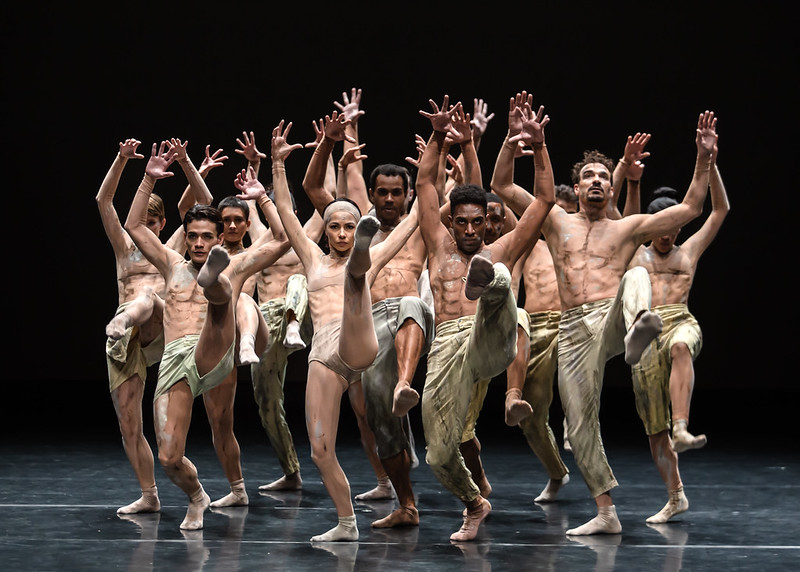
Beginning with the ensemble breathing together as if part of one organism, Anthem tackled the concepts of belonging and identity through several recurring metaphors. Frantic patriotic flag-waving and militaristic marching gave way to biological depictions of the tree of life and a graphic pregnancy sequence, as well as a section of war between two groups complete with physical confrontation and shouting onstage.
If that sounds baffling, it’s because it was. But even the piece’s less successful choreography was brilliantly executed by the ensemble, a big group that felt like one natural organism. Its best sections revolved around a duet, where a male and female dancer beautifully folded themselves around each other in a co-dependent, self-destructive cycle.
The company’s impressive connections to each other and raw physical and emotive power were even more apparent in Gnawa, the second piece and highlight of the evening. By Spanish choreographer Nacho Duato, this sensual and soulful piece was inspired by his home city Valencia and the Gnawa people, who were brought to North Africa as slaves. Its score, created by seven different composers, leans on North African melodies.
At its heart was a spell-binding duet between dancers Ammanda Rosa and Nielson Souza, to a wondrous, springlike soundtrack of trilling music and the quiet noise of running water. Rosa – a supple, birdlike dancer in a near-naked skin-tone bodysuit – was simultaneously graceful and strong, while Souza’s phenomenal control and rhythmic physicality was a joy to watch.
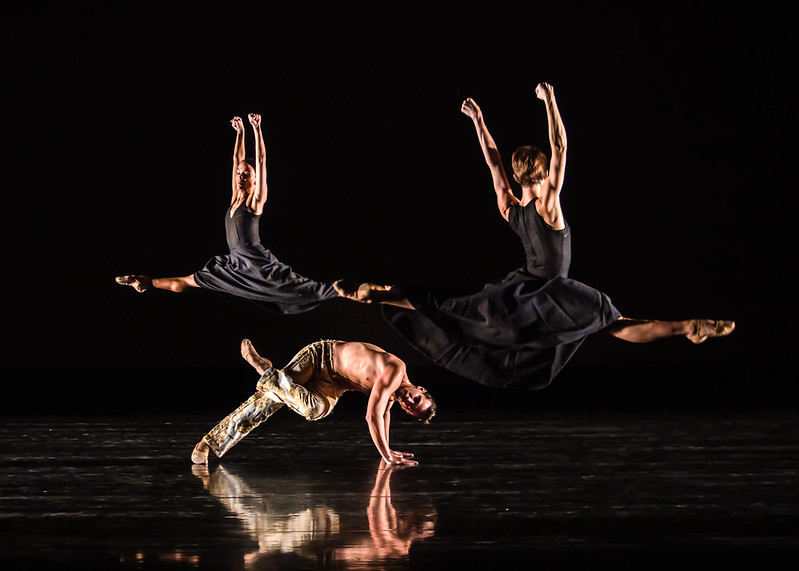
Gnawa moved with ease through different dance influences – the shifts from the flexed feet and jagged movement of contemporary to hip-swaying of samba was particularly well done. And its transitions from the North African-inspired score to reflective moments of birds chirping, with ritualistic elements like the placing of candles at the front of the stage, added to the piece’s mysticism. Group sections featuring women in black dresses and male partners were full of inventive lifts and combinations, showcasing the company’s athleticism and dynamic style.
The tempo of the evening continuously wound up, ending with the infectiously bright and energetic Agora by Brazilian choreographer Cassi Abranches. Beginning with the ensemble – now clad in shades of burnt orange and sienna – rocking in time to an increasingly fast metronome, the piece was elevated by the dancers’ precise movements exactly in time to a percussive Afro-Brazilian score.
This was a joyful, colourful dance, complete with death-defying, feet-first leaps of faith which caused the entire audience to gasp in shock. Sebastian Piracés’ eclectic score included synths, rock music, and female vocals alongside a groovy bass, and was so catchy I heard an audience member humming along to it as we left the theatre.
Like each of the three pieces it had well-worked moments of stillness and frenzy, and choreography which highlighted individual solo sequences – Souza again was electric – along with same-sex and mixed partner sections and synchronised group work.
A fully immersive and vibrant show, Sao Paulo Dance Company has combined the heat of Latin American rhythms with fantastic classical technique and acrobatic strength to develop a distinct and dazzling style. The company’s UK tour continues until Saturday 23 March, with one more night at The Lowry on Wednesday 13 March – tickets are available here.
Feature image credit: Camilo Munoz and Iari Davies, courtesy of The Lowry. Used with permission.
